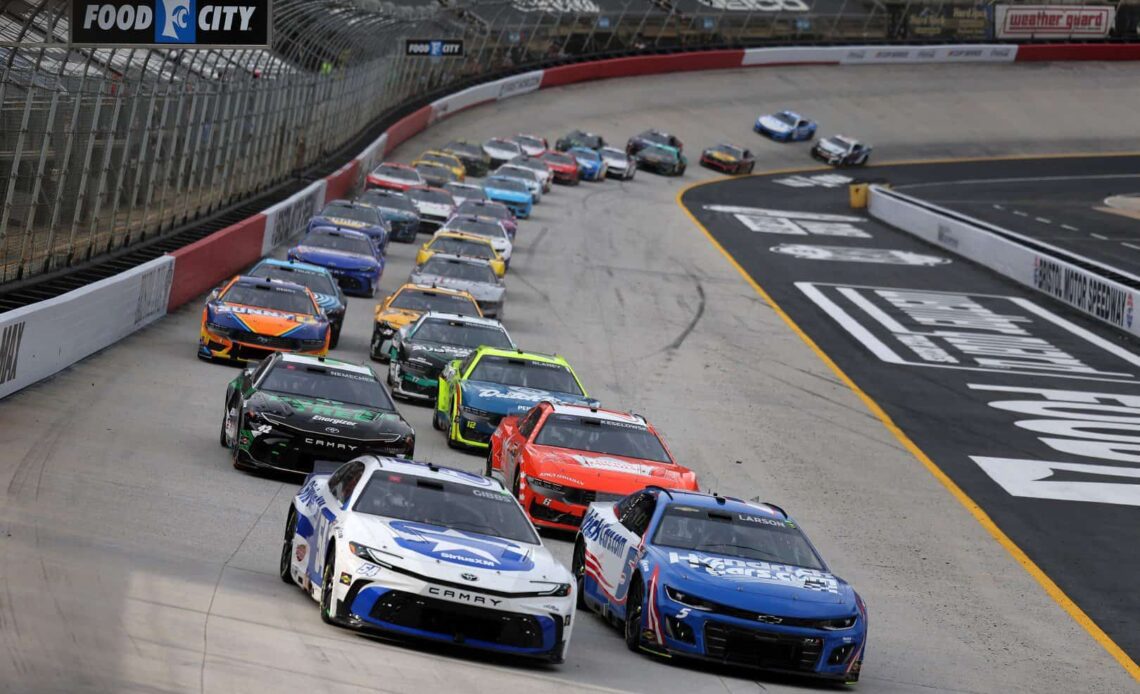With a Next Gen car that has produced lackluster short track racing since its inception two years ago, the emotions entering Sunday’s (March 17) Food City 500 at Bristol Motor Speedway were bleak.
The prior event at Phoenix Raceway did not live up to the hype of the new short track aero package and the NASCAR Cup Series was headed to Bristol for what appeared to be another lackadaisical affair, even with the fanfare of the return to concrete in the spring after three years on dirt.
That is until the fans, teams, drivers and NASCAR itself realized that the right-side tires were worn out after 40 green-flag laps, and the teams only had nine sets for 500 laps. Goodyear brought the same tires from the fall, but it was a combination of cold weather (60 degrees) and the resin that NASCAR applied to the track – instead of the usual PJ1 traction compound – that led to the extreme tire wear.
The race looked like a disaster as the tire problems reared their head at the beginning, and yet, the drivers and teams turned a curveball of the race into something absolutely incredible by the time the checkered flag waved on lap 500.
In a race reminiscent of yesteryear, the drivers had to preserve their tires and protect their equipment. Unlike most Cup races nowadays where drivers were on the gas and using their equipment at 100% from start to finish, slow and steady won Sunday’s race. And it proved to be a battle of experience, as the three oldest drivers in the field (Denny Hamlin, Martin Truex Jr. and Brad Keselowski) did the best job of preserving their tires and came home first, second and third, respectively.
The pace of the field slowed down as drivers nursed their cars around on worn or corded tires. However, the tire wear led to an abundance of passing and comers-and-goers in the race. Some drivers slowed down, while others sped toward the front of the field, only to be blown away by cars that slowed down if the driver had burned up his stuff. And, most importantly, no drivers complained about dirty air, aero pushes or brick walls of momentum during the day.
The result? Fifty-four lead changes, a Cup record for not only Bristol but for all short tracks in the Cup Series’ 75-year history of racing on them.
The previous record for lead changes at Bristol was 40, set in April 1991. But that race has an asterisk of sorts, as it was the sixth race of the 1991 Cup season that started with new pit road procedures after Bill…
Click Here to Read the Full Original Article at …

